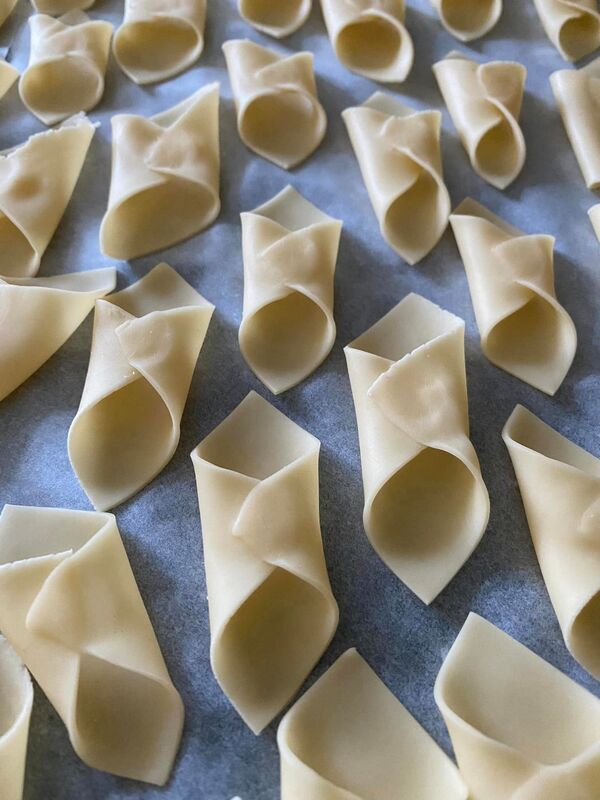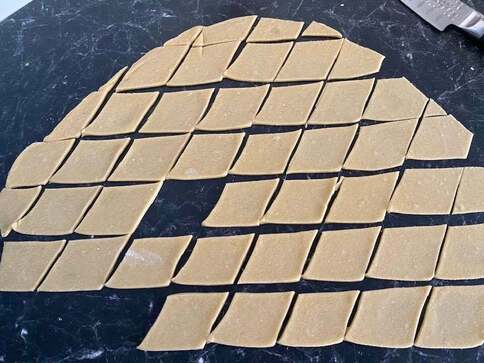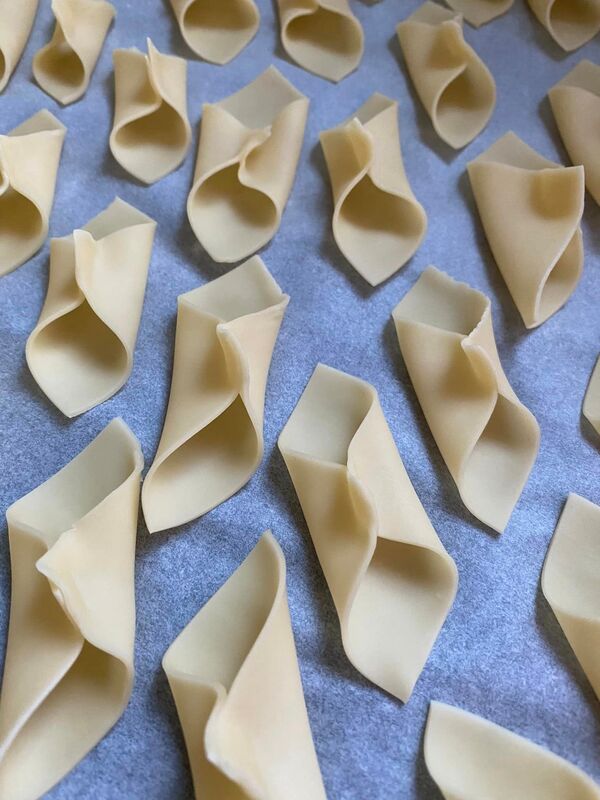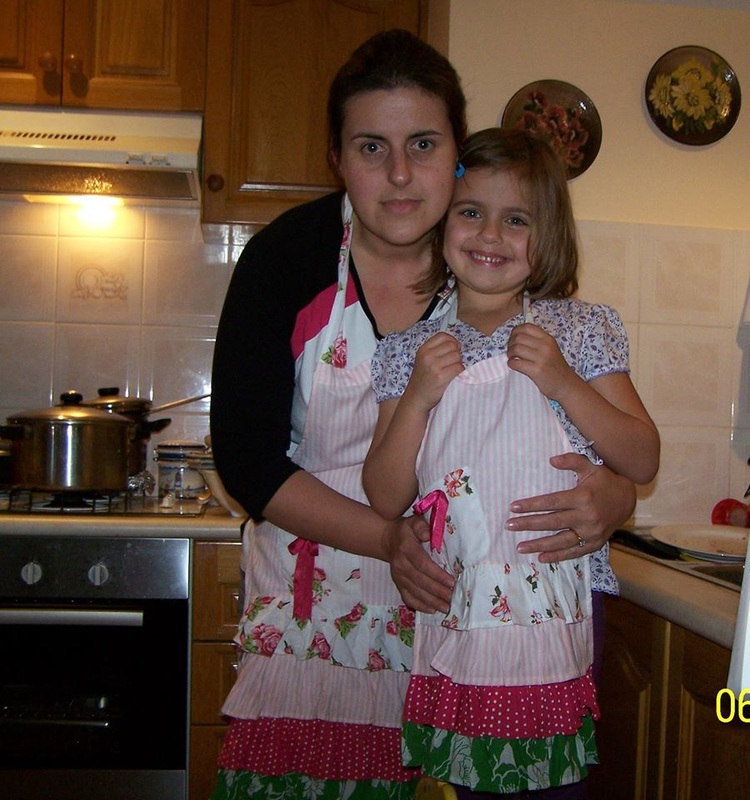Making pasta is far easier than I thought, follow the instructions and you to can make pasta.
Traditionally I've read water does not go in the dough, but with this recipe I add it and it works, it makes the dough softer I feel.
This recipe is easy and basic and doesn’t change. What does change is the quality of the flour, the size of eggs and the humidity in the air. Don’t panic; what is important is to know what consistency you are trying to achieve, then you can adjust things accordingly. The consistency of the dough should be like playdough – it shouldn’t be too dry or fall apart but it shouldn’t be too wet either or stick to your hands.
Don’t be tempted to add too much flour – the more flour you add, the heavier the pasta will be. When flour is added to water it basically turns to glue, so if you add too much flour to the mix, your pasta will become claggy and heavy. This is why you should always place pasta shapes on a tray with semolina rather than flour, as it disperses when the pasta is put in the water.
Also use 00 flour, it does make a difference, but you can substitute bread flour if you need to.
Once you’ve cut your pasta shapes, place them on a tray which has a dusting of semolina. Space them out so that they air-dried a little and don’t stick together.
Once you’ve cut your pasta shapes, if you make more pasta than you want to use (I like to cook 100g of pasta per person), leave it to air dry for 2-3 days and once completely dry it will keep in a bag or jar for several months.
So if you are interested in making pasta, give this recipe a go, it's delicious.
Recipe
Serves 5-6
500g pasta flour
3 eggs
20ml olive oil
5g salt
50ml water
Place the flour on a board or on your kitchen bench and make a well in the centre.
Crack the eggs into the well, add the oil, a pinch of salt and the water, then with a fork or your fingers, mix the wet ingredients into the flour as much as possible so it’s not sticky. Don’t worry if there are lumps in the dough. Keep mixing and then when crumbs form put it on a flat surface and knead together.
Once it is all combined, knead until you have a silky, smooth, elastic dough. You are aiming to achieve a playdough texture. If your dough is crumbly (too dry) add a teaspoon at a time of water. If the dough sticks to your hands (too wet) add a little extra flour.
Cover with cling film and rest for 30 minutes at room temperature.
When using a pasta roller, take a tennis ball-sized amount of dough, squash it flat with your fingers (remember to keep the rest of your dough covered with the cling film so it doesn’t go dry and crusty) push it through the pasta roller on the widest setting. Fold into thirds, then repeat 3 times. Once you have a rough square shape, start working it through the machine, taking it down one setting at a time, until the thinnest setting. If your pasta is too sticky, it won’t go through smoothly, so add a little flour to each side before you put it through the roller. Try to avoid too much flour – the less you use, the better otherwise your pasta can start to feel heavy and claggy when cooked.
I do prefer the pasta machine as I like the dough quite thin, but you can also roll the dough by hand using a rolling pin, but make sure you get it as thin as possible.
You will end up with long rectangular sheets of pasta approximately 8-10cm wide and about the thickness of two playing cards. Lightly dust a flat surface with fine semolina and lay out the pasta sheets.
Cut the pasta sheets into three pieces lengthways, now horizontally, cut out squares, your squares will be around 3cm x 3cm. If you have hand rolled the pasta you can go as large as 4cm x 4cm.
Cook in boiling salted water for about a minute or two. It really does not take long. Serve with a tomato sauce, a creamy mushroom sauce or a ragu.
Enjoy!
Pin it: www.pinterest.com.au/pin/399413060718240127/




 RSS Feed
RSS Feed